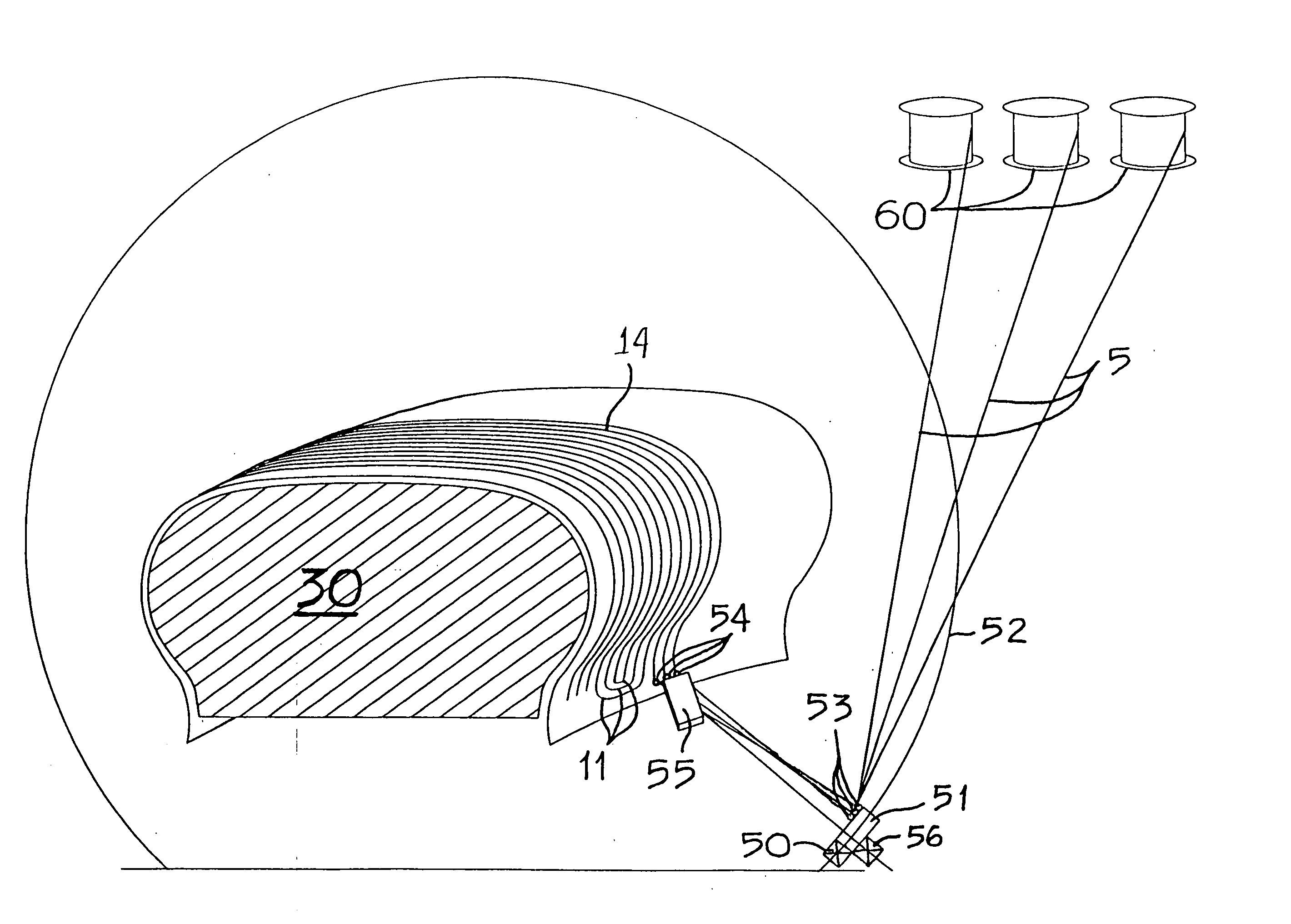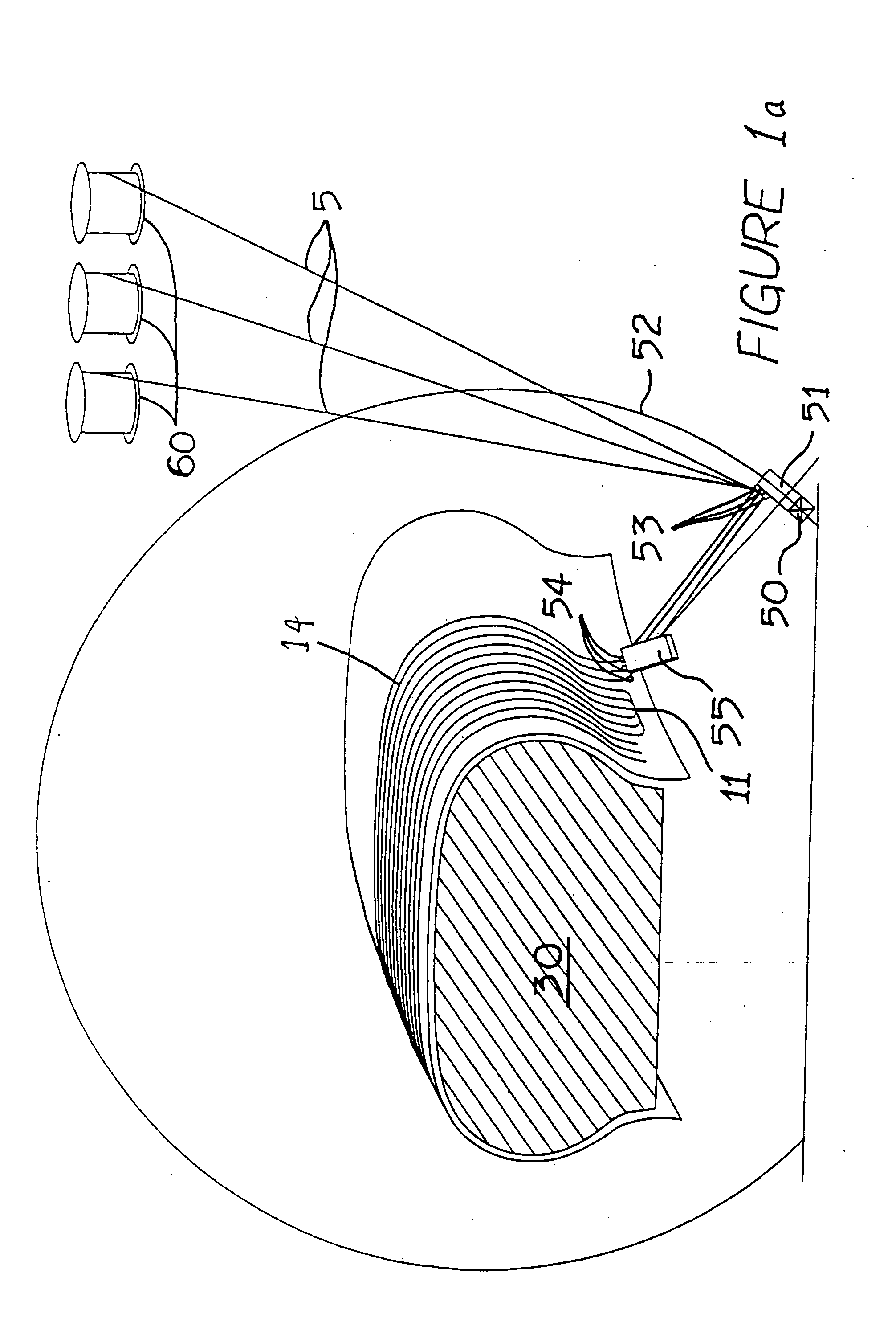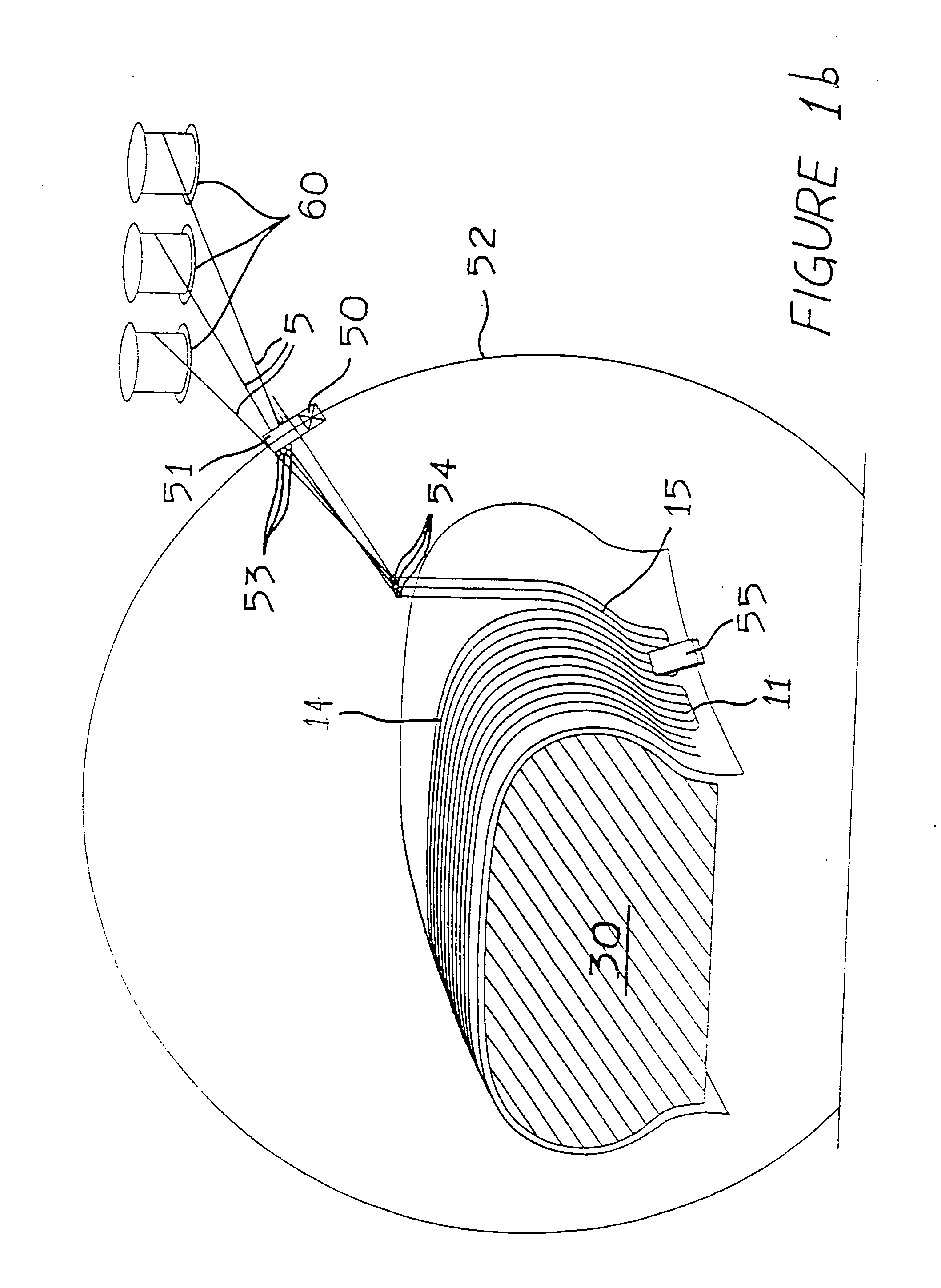Method of laying cords of a reinforcement structure for tires
a technology of reinforcement structure and filament, which is applied in the direction of tire beads, tyres, vehicle components, etc., can solve the problems of difficult modulation of sidewall and/or bead characteristics, tire described in this document do not have the conventional upturn, etc., and achieves the effects of increasing the modulus, increasing the density of the filament, and reducing the number of filaments
- Summary
- Abstract
- Description
- Claims
- Application Information
AI Technical Summary
Benefits of technology
Problems solved by technology
Method used
Image
Examples
Embodiment Construction
[0101]FIGS. 1a to 1d illustrate an example of a method which permits the manufacture of tires such as those described in the following figures (in particular FIGS. 3 to 14), with the substantially simultaneous laying of at least two cords 50. Using this method facilitates obtaining portions of substantially parallel paths. Storage or supply means make it possible to bring in two, three (or even more) cords which are to be applied to a first layer of rubber mix formed substantially in the image of the profile of the final product. Before application, the cords are arranged in the immediate vicinity of each other at distances corresponding substantially to the distance provided between the cords of one and the same group. For application of the cords against the mix, the laying means moves in space, for example from one bead to the other, along the path which the cords to be laid have to follow in the tire.
[0102] Thus, a group of cords is guided by a laying means for application alon...
PUM
| Property | Measurement | Unit |
|---|---|---|
| angle | aaaaa | aaaaa |
| angle | aaaaa | aaaaa |
| angle | aaaaa | aaaaa |
Abstract
Description
Claims
Application Information
 Login to View More
Login to View More - R&D
- Intellectual Property
- Life Sciences
- Materials
- Tech Scout
- Unparalleled Data Quality
- Higher Quality Content
- 60% Fewer Hallucinations
Browse by: Latest US Patents, China's latest patents, Technical Efficacy Thesaurus, Application Domain, Technology Topic, Popular Technical Reports.
© 2025 PatSnap. All rights reserved.Legal|Privacy policy|Modern Slavery Act Transparency Statement|Sitemap|About US| Contact US: help@patsnap.com



